 Building Muscle: Best Foods, Fitness and Nutrition Strategies
Building Muscle: Best Foods, Fitness and Nutrition Strategies
Building muscle is not just about your looks. Sure, a toned body can look attractive. But how you feel is more important than how you look. Building muscle can help to improve your strength, improve your stamina, increase your bone density, support your joints, aid weight loss, support a healthy weight, control your body fat, reduce the risk of chronic disease, increase your confidence, boost your mental health, and improve your overall well-being. With better muscle mass and muscle health, you will feel better in your body.
In this article, you will learn about the importance of building muscle. You will learn why the muscle is like a glucose sponge. I will discuss how muscle tissue impacts your brain. I will offer some fitness strategies for building muscle. I will share my best nutritional strategies for building muscle. I will also share some lifestyle tips for muscle building. Finally, I will share my best supplement recommendations for building muscle and muscle health.
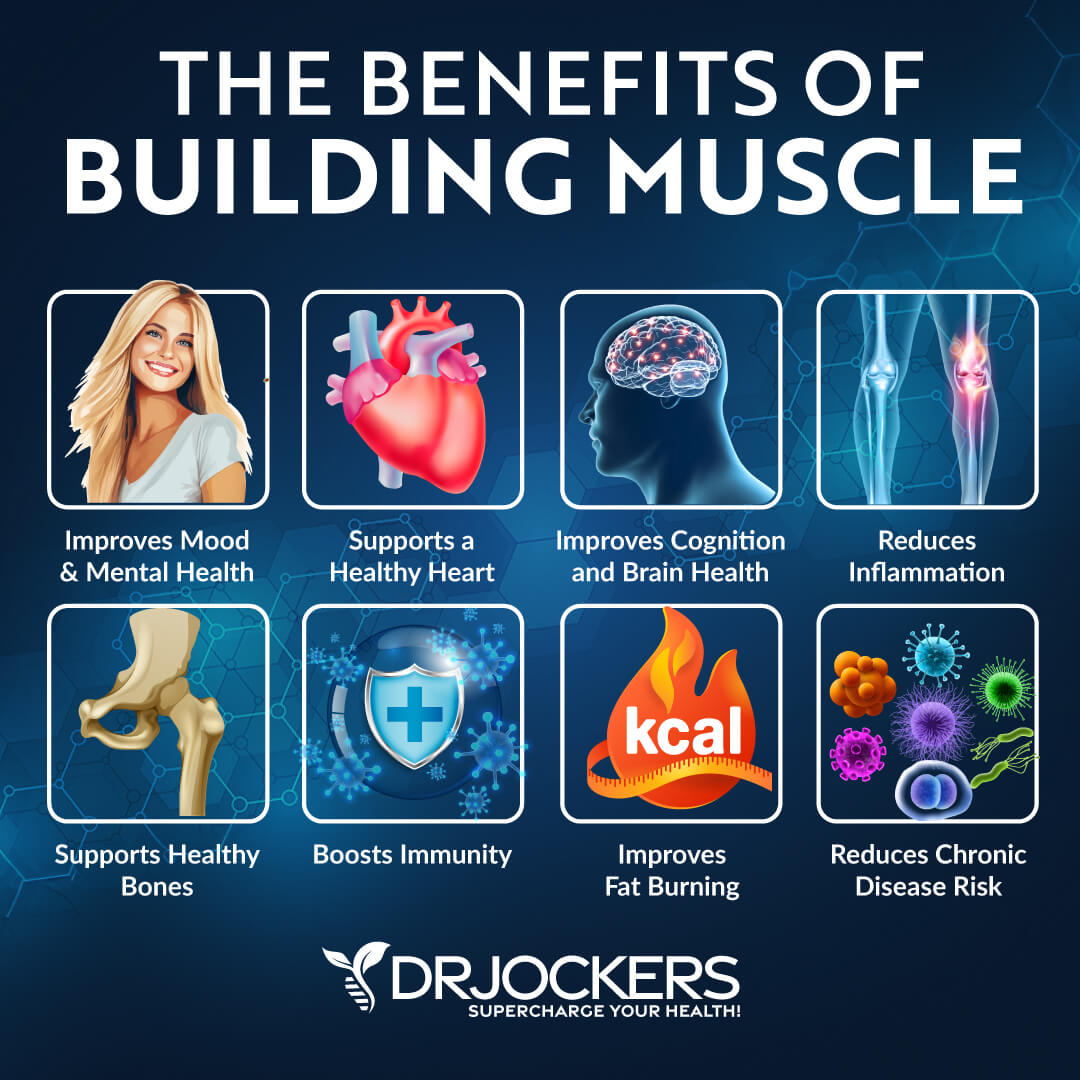
Importance of Building Muscle
We all want to look good in our bodies. But building muscle is more than just vanity. Building muscle and improving your strength have so many important health benefits that you can’t ignore them.
Building muscle can help to improve your strength, improve your stamina, increase your bone density, support your joints, aid weight loss, support a healthy weight, control your body fat, reduce the risk of chronic disease, increase your confidence, boost your mental health, and improve your overall well-being.
According to a 2009 study published in the Journal of Physiology, building muscle may help to prevent health issues and signs of aging (1). A 2017 review published in Arthritis Research and Therapy has found that strength training and building muscle is critical for joint and muscle health (2).
According to a 2019 review published in Frontiers in Physiology, building muscle may reduce the risk of age-related chronic disease and mortality (3). According to a 2020 systematic review and meta-analysis published in the International Journal of Environmental Research and Public Health, building muscle may improve depression and mental health symptoms (4).
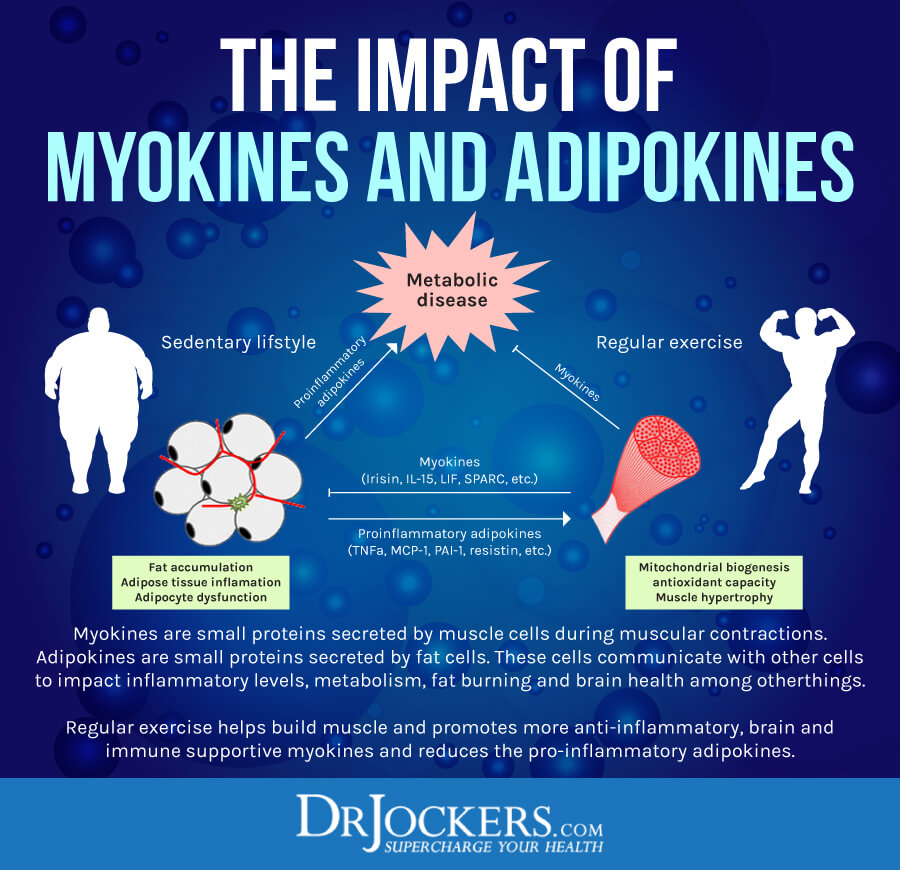
Muscle as a Glucose Sponge
Unfortunately, in our modern world, most people live a sedentary lifestyle and follow a high-carbohydrate, overly processed inflammatory diet. This is a recipe for obesity, prediabetes, diabetes, and other health issues. Though obesity and diabetes often come hand in hand, this is not always the case. You may develop insulin resistance, prediabetes, or diabetes, even if you are at a healthy weight, especially if you are following an unhealthy diet.
It may surprise you, but building muscle may actually help you to fight diabetes and obesity at the same time. Your skeletal muscle takes up glucose and stores it as glycogen. The problem is that if you don’t train your muscles regularly, your body can lose its ability to store carbohydrates. So what happens if your body has nowhere to put all this sugar? Your blood sugar will rise. Your pancreas will start secreting insulin. And in the end, it will be stored as fat. And you may gain weight, or more specifically, gain fat.
However, having more muscle means you have more space to store glucose for energy. Building muscle can reduce glycation and improve insulin sensitivity. According to a 2001 review published in the Journal of Physiology and a 2005 review published in Physiology, exercise and building muscle may increase glucose uptake of your skeletal muscles and improve insulin sensitivity (5, 6). According to a 2013 study published in Diabetes, Metabolic Syndrome, and Obesity: Targets and Therapy, high-intensity exercise may reduce blood glucose levels (7).
By improving insulin sensitivity, building muscle may reduce not only the risk of insulin resistance, prediabetes, and diabetes but also chronic inflammation, chronic health issues, cancer, and accelerated aging. According to a 2018 study published in Cardiovascular Diabetology, insulin resistance may increase the risk of cardiovascular disease (8).
A 2012 review published in Experiments in Diabetes Research has found that insulin resistance may increase the risk of developing cancer and worsen the progression of the disease (9). Improving insulin sensitivity through building muscle may help to reduce these health risks.
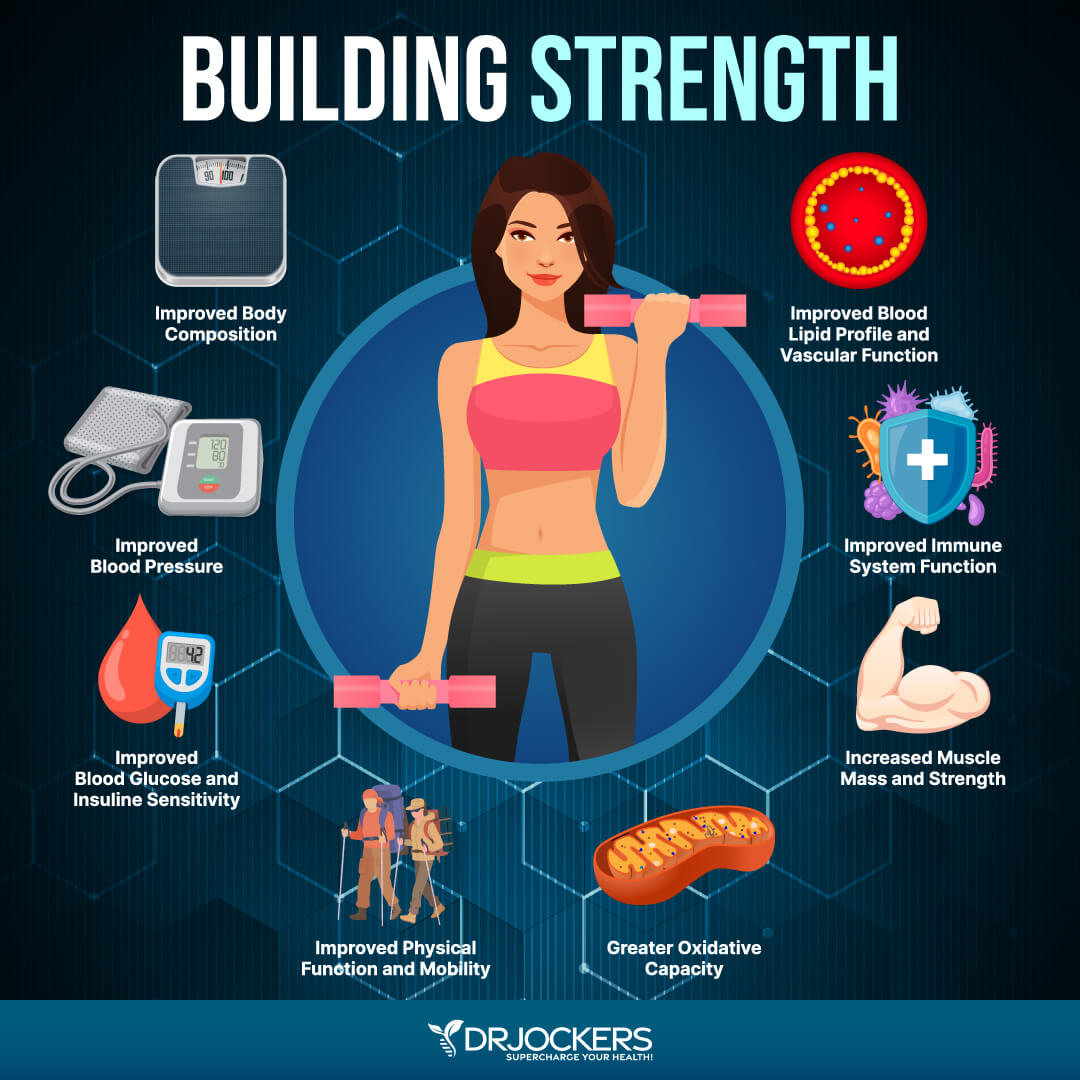
How Muscle Tissue Impacts Brain Health
A 2020 review published in the International Journal of Molecular Sciences has found a connection between skeletal muscle decline and cognitive decline (10). Researchers found that aging plays a role in both sarcopenia, a loss of skeletal muscle with aging, and cognitive decline.
They found that physical inactivity, an unhealthy diet, smoking, and other lifestyle factors also play a role in both muscle and cognitive decline. Researchers suggest that the muscle-brain relationship needs to be further investigated to fully understand the potential connection between muscle health and cognitive function.
Myokines are cytokines that play a role in skeletal muscle health. They are synthesized and released by myocytes, the smallest subunit of your muscle tissues, during muscle contractions. A 2021 review published in Neuropharmacology has found that myokines help improve brain health (11). Researchers discussed that myokines are made up of signaling proteins, which is responsible for a variety of physiological and metabolic mechanisms, including brain function.
They found that myokines release due to physical exercise and muscle-borne signals may play a critical role in brain physiology. They help to improve brain derived neurotrophic factors (BDNF) that improves neuronal health and the synaptic density in the brain.
This helps to improve memory, learning, mood, and other brain functions. Researchers suggest that understanding the connection between skeletal muscle and the brain may help to develop therapeutic strategies to reduce the risk of brain disease and improve quality of life.
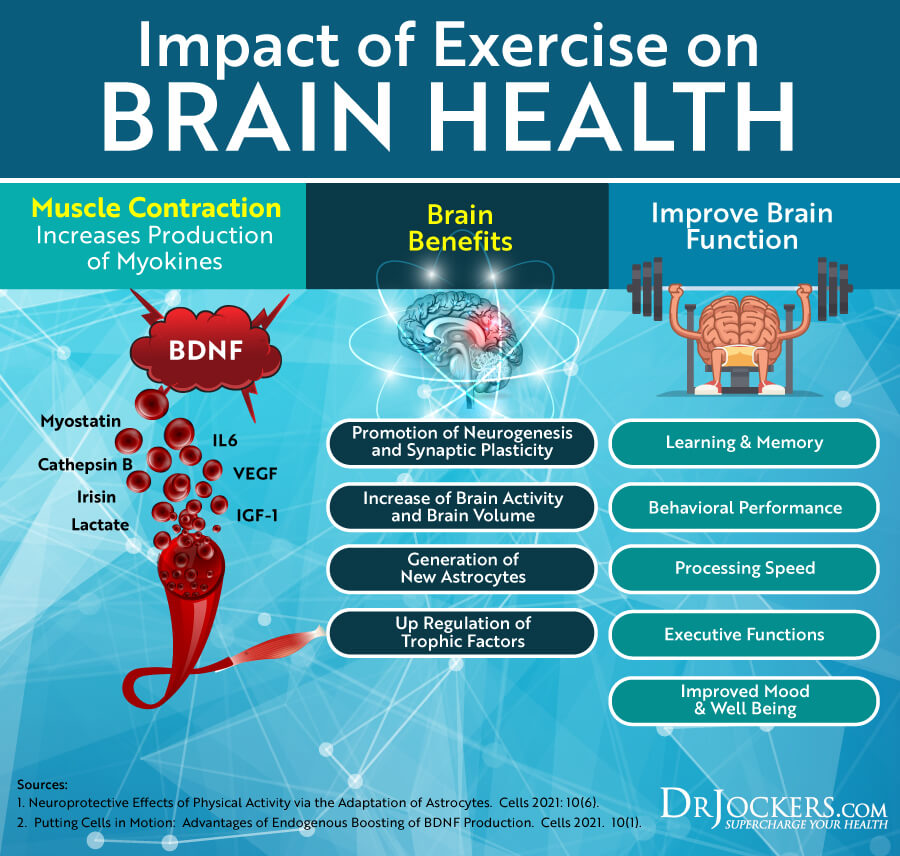
Best Fitness Strategies for Building Muscle
You can see that building muscle is incredibly important for your health. You should also know that the average individual begins to lose muscle around the age of 25. Between ages 40 and 70, the average person may lose 8 percent of muscle per decade.
After age 70, you may lose up to 15 percent per decade (12). The importance of building muscle increases with age. To build muscle and improve your strength, read on to learn my best fitness strategies for building muscle.
Resistance Training
Resistance training is a type of exercise that helps to improve muscular strength and endurance. You can use your own body weight, resistance bands, or weights for resistance training, depending on your goals and current strength.
Resistance training may support muscle strength, muscle endurance, muscle power, joint stability, and overall health. It may improve your metabolism and help you lose body fat. According to a 2015 study published in the European Journal of Clinical Nutrition, 9 months of resistance training may significantly increase your resting metabolic rate, reduce body fat, and improve thyroid health (13).
Resistance training may also improve bone density, muscle mass, strength, and balance. A 2018 review published in Endocrinology and Metabolism has found that resistance training may help to preserve and improve both bone and muscle mass (14). According to a 2013 study published in the Journal of Physical Therapy Science, only 12 weeks of resistance training may improve the balance and strength of the elderly (15). According to a 2019 systematic review published in the International Journal of Environmental Research and Public Health, resistance training may help to reduce muscle loss and improve muscle mass (16).
Resistance training may also improve stress, anxiety, depression, and general mental health. A 2020 study published in Scientific Reports has found that resistance training may help to reduce stress, worry, and anxiety (17). A 2018 meta-analysis published in JAMA Psychiatry has found that resistance training may reduce symptoms of depression (18).
For resistance training, you may use resistance bands, suspension trainers, dumbbells, kettlebells, barbells, and pull-up bars. If you don’t have any weights, starting with gallon jug waters, a backpack filled with unopened bags of flour or other creative ways may be an option. You may also try bodyweight exercises, including pushups, planks, squats, pull-ups, and more. Starting with your body weight before adding free weights or other equipment may be smart, depending on your current strength.
Remember to work all your muscles. Try exercises for your abs, glutes, quads, hamstrings, calves, arms, and shoulders. Learning the proper form for your workouts is important to lower your risk of injuries and optimize your ability to build muscles. If you are new to resistance training, you may benefit from working with a physical therapist or athletic trainer at first to learn the proper form. Working with a workout buddy is another great way to ensure proper form and safety. It’s also a fun way to exercise together.

Large Muscle Compound Exercises
I recommend practicing large muscle compound exercises. They are efficient as they use more than one muscle group at the same time. Compound exercises allow you to lift heavy, challenge yourself, and build muscle. They are usually complex, requiring focus and strength. They may burn more calories and fat. Compound exercises help to improve your strength, power, and muscle gains. They may also improve your mobility and coordination.
Compound exercises may help to increase your testosterone and growth hormone levels. A 1989 study published in Mechanisms in Aging and Development has found that working your major muscle groups using 8 – 10 reps and progressive resistance training may increase testosterone and growth hormone (19).
A 2021 study published in the European Journal of Applied Physiology has also found that exercise may increase testosterone (20). By increasing testosterone and growth hormone levels, large muscle compound exercises may effectively help you burn fat and build muscle.
Some fantastic large compound exercises include squats (body weight or with weights), barbell hip raises, deadlifts, incline bench presses, cleans and press, rows, shrugs, parallel dips, and pull-ups. People generally recommend 2 to 5 sets with 8 to 12 repetitions each set for each exercise.
However, this may change based on your workout plan and goals. Heavy weight lifters may focus on heavier weights and much lower reps and this can be very effective for building muscle tissue. As with resistance training and any exercise, learning the proper form is key to success and safety.
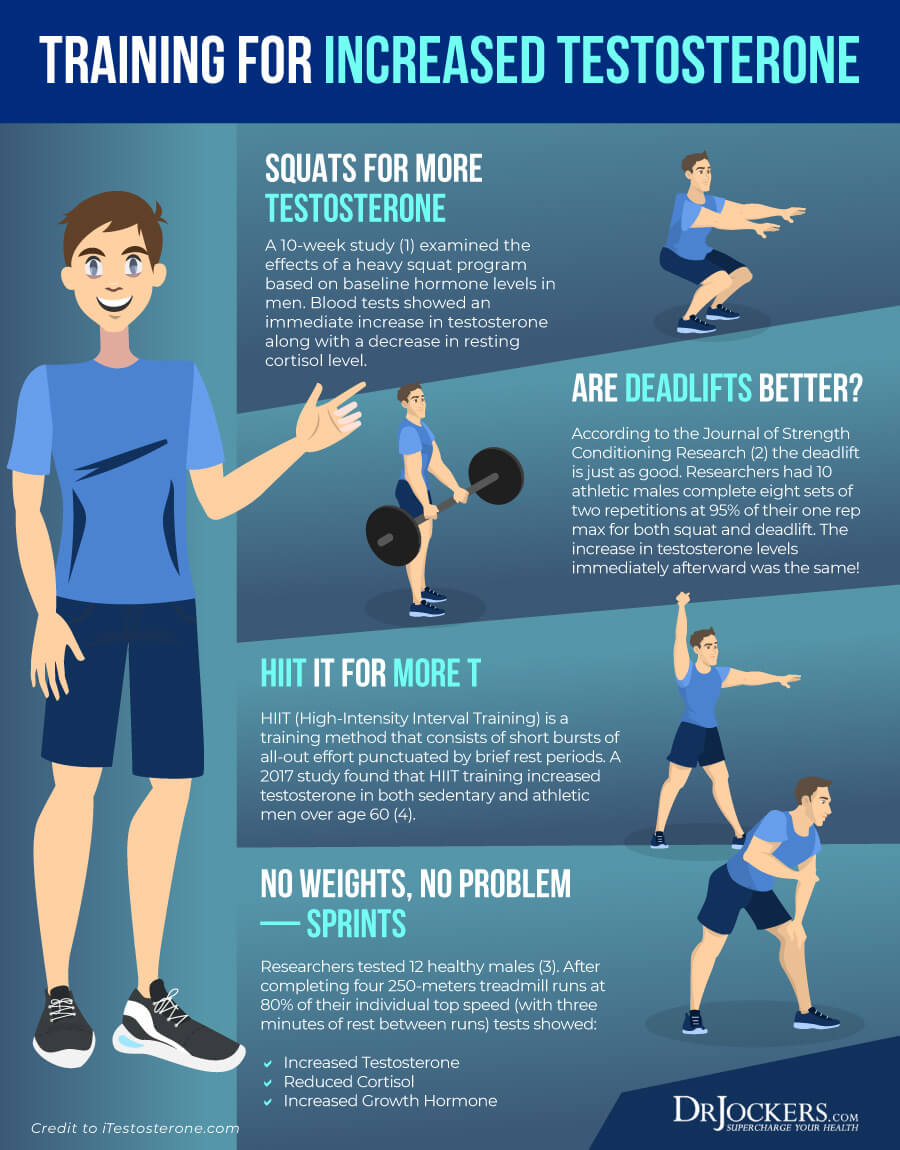
Be Careful to Avoid Overtraining
Moving your body, exercising regularly, and building muscle is important. However, doing too much can turn into an issue. Overtraining can have a serious impact on your body. According to a 2021 study published in Biology (Basel), overtraining can have physiological and psychological effects (21).
Overtraining may increase chronic inflammation. It can lead to low energy and poor sleep. Chronic inflammation may lead to metabolic dysregulation. It can compromise your immune system and increase your risk of getting sick. It may affect your gut, gut-muscle, gut-brain, and hypothalamic–pituitary–adrenal (HPA) axes.
It may also lead to weight gain and a decline in stamina. Long-term, it may even damage your bones, heart, and other organs. In women, it may lead to amenorrhea, a loss of period. Overtraining may increase depression, anxiety, anger, low motivation, low self-esteem, eating disorders, and low confidence.
Be careful to avoid the risk of overtraining. Don’t start anything suddenly, and don’t do too much too soon. Choose a gradual approach. Gradual increase in the length or difficulty of exercise or heaviness of weights used can allow your body to adjust, train, and recover properly.
Don’t compare your progress and the amount of exercise you do to other people. Work at your own place. Respect your body and integrate rest and recovery. Follow difficult days with easier days. Take rest between reps. Prioritize sleep. Nourish your body with anti-inflammatory food to support recovery.
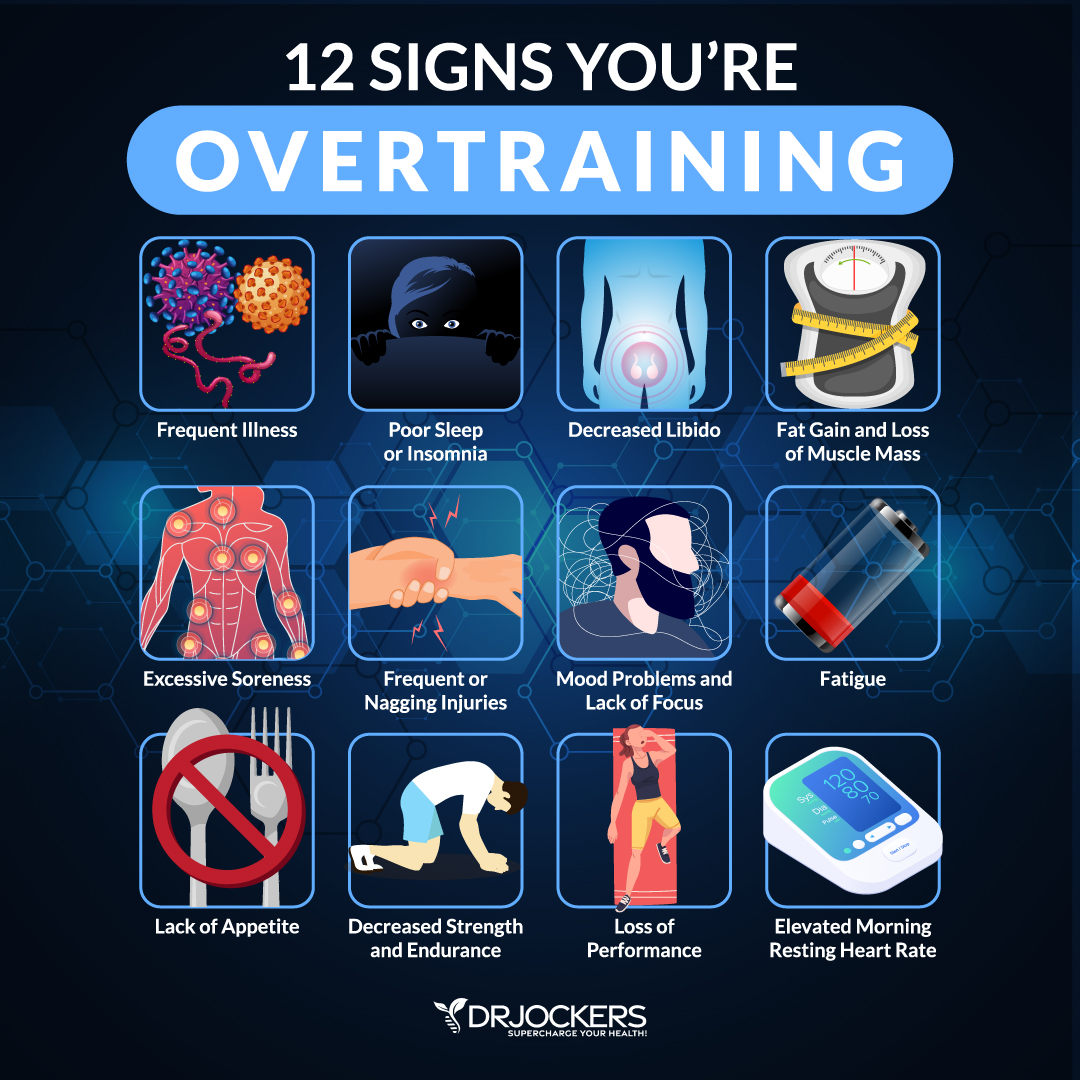
Best Nutrition Strategies for Building Muscle
Proper nutrition is an important part of building muscle. Without nourishing your body, your muscles can’t work effectively and can’t grow as your workouts dictate it. You won’t be able to recover properly. Proper nutrition, however, supports your workouts, energy, muscle growth, strength, and recovery.
Follow an Anti-Inflammatory Nutrition Plan
A 2020 study published in the Journal of Applied Physiology has found that combining an anti-inflammatory diet with resistance exercise may reduce chronic inflammation and support muscle health (22). I recommend following an anti-inflammatory diet. Avoid refined sugar and carbs, refined oils, artificial ingredients, sugary soft drinks, additives, deep-fried food, junk food, and other overly processed food.
Eat plenty of greens, vegetables, herbs, spices, fermented food, low-glycemic index fruits, grass-fed beef, pasture-raised poultry and eggs, grass-fed butter and ghee, wild-caught fish and seafood, and wild game.

Get Enough Protein
Within your anti-inflammatory diet, get enough protein. Focus on high-quality animal protein, including grass-fed beef, pasture-raised poultry and eggs, wild-caught fish and seafood, and wild game. You may add some protein powder to the mix to improve your protein intake.
If you are engaging in strenuous exercise that leads to increased muscle hypertrophy, then you will need a higher daily protein intake. Those engaging in bodybuilding, frequent weight lifting (4 to 6 days per week), and high-level athletics will typically fit in this category.
If your goal is to build muscle during an intense workout regimen, then 1.5 to 2.0 grams of protein per kg of body weight is a great target. Reserve the higher end of that range for hard training days. This is roughly about 80 to 90 off grams per protein as your body weighs in pounds.
If you find yourself grinding for 2-3 hours a day, 5-7 days a week, you will absolutely need to up your protein intake a bit higher. Additionally, it may be advantageous to utilize an essential amino acid complex (such as this one) to provide an easy-to-use source of muscle-repairing amino acids.
Whey protein is an incredible protein powder for supporting muscle growth. Additionally, bone broth or collagen protein can help support healthy joints and reduce the risk of injuries.
If you are challenged daily to the point of exhaustion and need to push the boundaries of your fitness constantly, 1.8-2.5 grams of protein per kg of body weight is where you should aim to be.
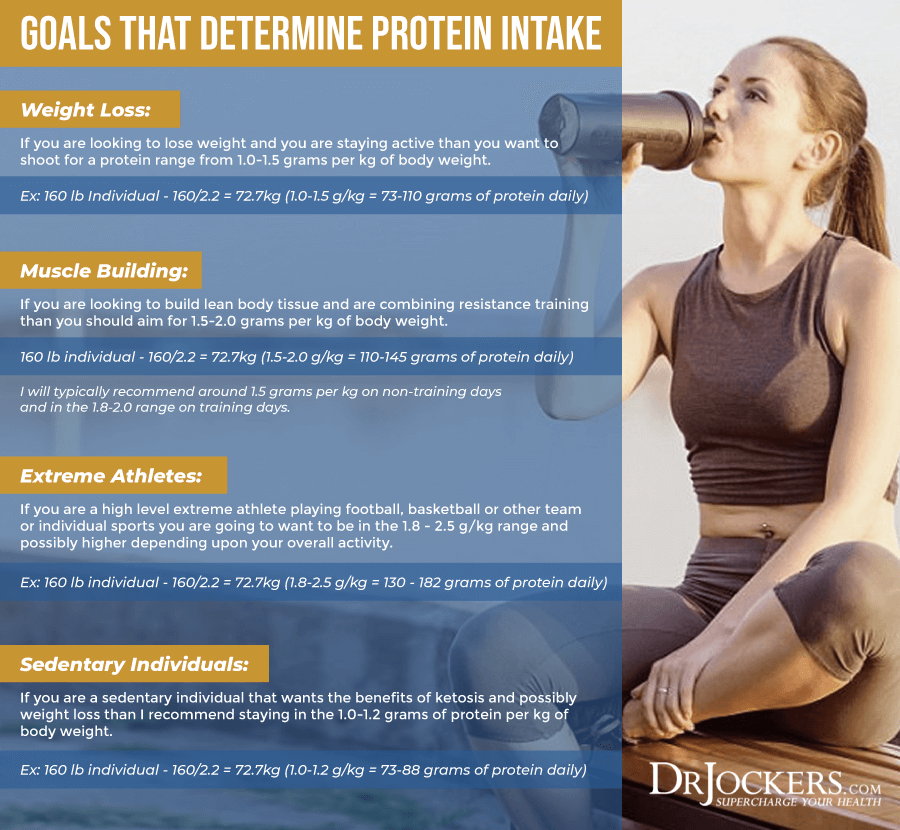
Time-Restricted Feeding
Protein intake stimulates a physiological pathway in the body called mTOR. mTOR stands for Mammalian Target of Rapamycin and is associated with the regulation of growing tissues in the body. While temporary elevations in mTOR are great for building muscle and burning fat, chronically elevated mTOR is associated with increased cancer risk and chronic disease.
According to a 2011 study published in Nutrition and Cancer, time-restricted feeding or fasting is a great way to inhibit the mTOR pathway (23). Time-restricted feeding or intermittent fasting is a way of eating that cycles between a period of fasting and a period of eating within a day. According to a 2014 study published in the International Journal of Health Sciences (Qassim), intermittent fasting may also help to reduce chronic inflammation and the risk of disease (24).
According to a 2014 systematic review and meta-analysis published in the Journal of Clinical Medicine, time-restricted feeding may also improve insulin sensitivity, support glucose metabolism, and lower body mass index (BMI) (25). According to a 1988 study published in the Journal of Clinical Investigation, time-restricted feeding may also increase human growth hormone secretion (26). The combination of all this may support your workout goals.
If you are new to time-restricted feeding, start with a 12-hour fast. Stop eating after dinner and don’t eat until breakfast 12 hours later. Gradually increase your fasting window until you find your sweet spot. Most people feel their best with a 16-hour fasting window.

Carb Cycling
A low-carb ketogenic diet is another great way to reduce inflammation, improve insulin sensitivity, and support your workouts. According to a 2011 study published in Epilepsy, a low-carb ketogenic diet is a great way to inhibit the mTOR pathway (27).
Long-term carb restriction, however, is not right for everyone. While a strict ketogenic diet still has its place for special cases, we are starting to realize that a cyclic ketogenic diet tends to give us the best of both worlds. The cyclical ketogenic diet is based on the feast or famine cycle. This is exactly what it sounds like, you go into a fasted (famine) state for a period of time, followed by a feasting period.
This cycle is similar to the kind of eating pattern our foraging and hunting ancestors would have followed as a natural consequence of their lifestyles. For beginners, I recommend 3 to 4 low-carb, keto meals per day about 4 to 5 days a week and 1 to 2 days of higher carb and/or higher protein foods. I also recommend 1 day of Intermittent Fasting from carbs/protein. Gradually, you can add more intermittent fasting and more low-carb days to your life. You may follow my guide here.
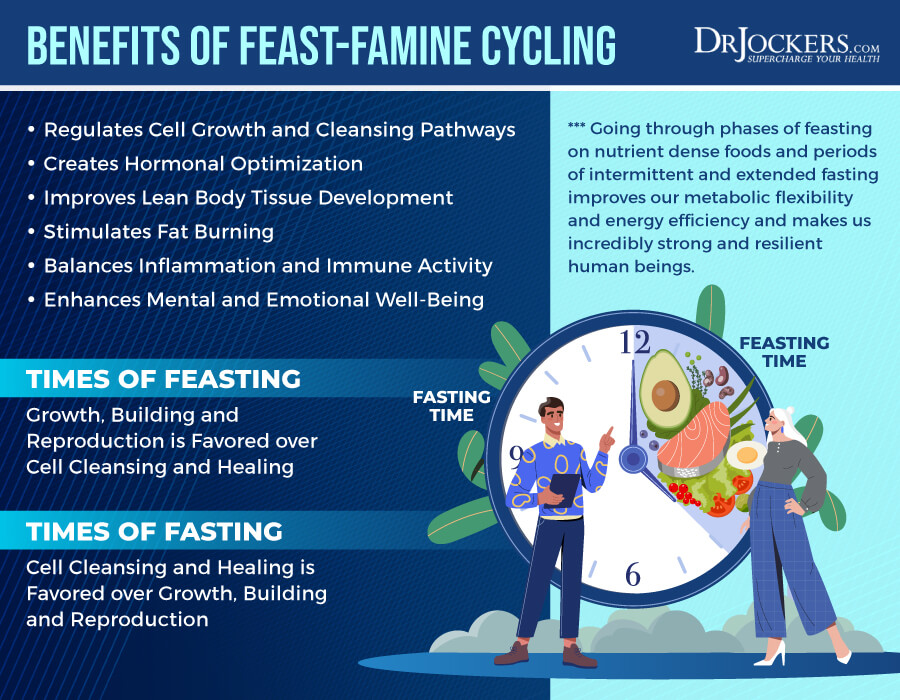
Get Enough Quality Calories
Getting enough quality calories is important. If you are not eating enough calories to support your workouts, gaining muscle will be difficult. To build muscle, you need a positive energy balance. This means that you have to eat more calories than you burn. You need about 2,800 calories to build one pound of muscle, though this may depend on the person.
Getting quality calories instead of empty calories is important too. You want to support your health instead of creating inflammation. Follow an anti-inflammatory diet with lots of greens, vegetables, herbs, spices, fermented food, and quality animal protein.
Eat high-quality animal protein, including grass-fed beef, pasture-raised poultry and eggs, wild-caught fish and seafood, and wild game. Eat plenty of healthy fats, such as avocados, grass-fed butter and ghee, coconut oil, coconut butter, extra-virgin olive oil, and olives.

Lifestyle Strategies
Practicing healthy lifestyle strategies can also support a healthy diet and an effective workout regimen. Here is what I recommend:
Get Daily Sun Exposure
You may not think about daily sun exposure when it comes to building muscle. But you may be surprised to hear how important it is. According to a 2016 study published in Geriatrie et Psychologie Neuropsychiatrie du Vieillissement, vitamin D is critical for muscle mass and physical performance (28).
They found that deficiencies in vitamin D may increase fractures and injuries. A 2020 study published in the International Journal of Exercise has found that ultraviolet light exposure may also increase testosterone levels (29).
I recommend spending at least 15 to 30 minutes each day outside in the sun. You may combine it with grounding or a walk or even a workout outdoors. Additionally, I recommend taking a high-quality vitamin D3/K2 supplement.
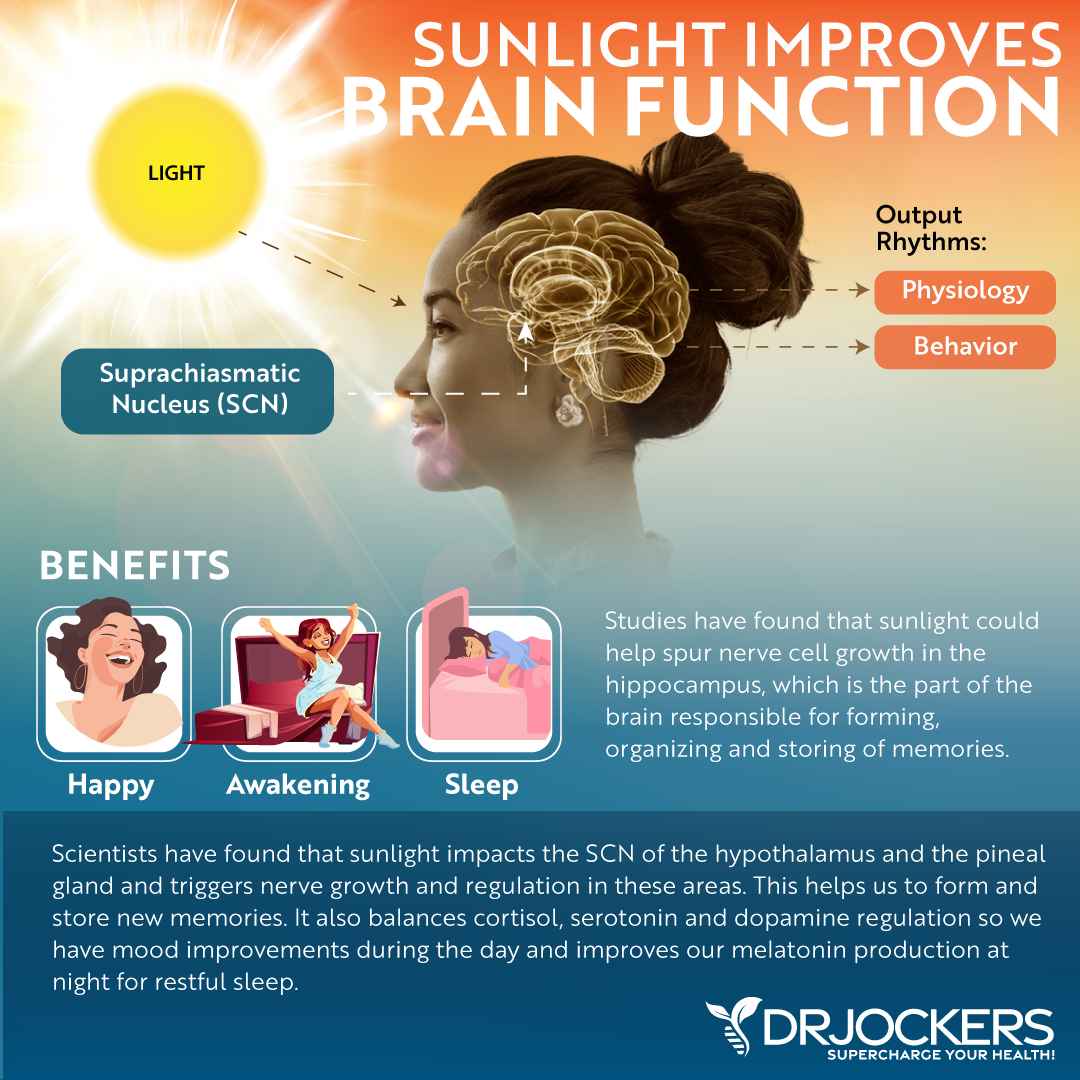
Prioritize Good Sleep
Not getting enough rest can be counterproductive, especially combined with overtraining (21). A 2021 study published in Physiological Reports has found that sleep deprivation can have a negative effect on skeletal muscle protein synthesis (30). A 2017 study published in the Journal of Musculoskeletal and Neuronal Interactions has found a link between sleep and muscle strength (31). Rest and sleep is essential for recovery and building muscle.
Make sure to get at least 7 to 9 hours of sleep at night. Avoid stress, electronics, heavy food, sugar, caffeine, and alcohol at least 2 to 3 hours before bedtime. Engage in relaxing activities, such as meditation, stretching, reading, crossword puzzles, and taking a healing bath. Invest in a supportive bed and mattress, comfortable pillows and bedding, an eye mask, and blackout curtains for better sleep.
I recommend using blue light blocking glasses after dark to help block out dangerous blue light and optimize melatonin production for your best quality sleep. Even if you are using blue light blocking glasses, it’s important that you turn off your electronics at least two hours before sleep, reduce stimulation, relax, and unwind your body and mind.

Top Supplements
Additionally, to these exercises, dietary, and lifestyle strategies, I recommend a few supplements for building muscles. Here are the top supplements you should try:
Whey Protein
I recommend Whey Strong as a protein powder. Whey Strong is a great-tasting, high protein, low carbohydrate, functional food powder. It is made with an exceptional quality whey protein made from the milk of cows that graze on pesticide-free, non-GMO grass pastures in New Zealand, which are known to be one of the least polluted environments in the world.
The milking cows are never fed grain and are not subjected to hormone or antibiotic treatments and unlike other instantized whey formulations, Whey Strong is soy-free. Mix 30 grams (approximately one scoop) in 8 ounces of water or any other beverage per day, or as directed by your healthcare practitioner.
Essential Amino Acids
I recommend Amino Strong to meet your body’s needs for essential amino acids. Amino Strong™ represents a breakthrough in the use of amino acids for muscle protein synthesis. Over 20 human trials have been conducted to arrive at this specific, patent-pending combination of amino acids in the most effective, anabolic ratios.
Whether you want to support muscle strength and function or prevent muscle loss associated with inactivity or aging, Amino Strong provides the right amino acids in the right ratios to help you meet your goals and stay healthy. I recommend one scoop a day.
Creatine
I also recommend this Optimum Nutrition Micronized Creatine Monohydrate Powder as a creatine supplement. Creatine is an organic compound that helps to support continuous energy supply for your muscles to help them work properly.
Creatine is found in your brain, heart, and other tissues. You can get it through diet, from red meat, seafood, and milk. However, if you are looking to build muscle, you may benefit from additional creatine supplementation.

Bonus: Grass-Fed Beef Organ Complex
Last but not least, I recommend this Grass-Fed Beef Organ Complex. Grass Fed Beef Organ Complex is a unique combination of freeze-dried bovine organs sourced from 100% grass-fed and finished New Zealand cattle (free from bovine spongiform encephalopathy). This product is formulated with a targeted blend of five different bovine organs, including the liver, heart, pancreas, kidney, and spleen, which may help support nutrient status in the body.
Edible offal and organ meats are one of the most nutrient-dense food groups. Compared to skeletal muscle meat, organ meats are known to store and contain higher amounts of proteins and other key nutrients. These vital nutrients include important energy-producing compounds, enzymes, beneficial fats, and amino acids. Bovine liver contains a variety of micronutrients that support various biological processes in the body. I recommend 3 capsules twice a day with food or 4 to 6 capsules twice a day with food for an advanced dose.
Final Thoughts
Building muscle may improve your strength, improve your stamina, increase your bone density, support your joints, aid weight loss, support a healthy weight, control your body fat, reduce the risk of chronic disease, increase your confidence, boost your mental health, and improve your overall well-being. Follow my recommendations to build muscle and improve your health.
If you want to work with a functional health coach, I recommend this article with tips on how to find a great coach. On our website, we offer long-distance functional health coaching programs. For further support with your health goals, just reach out and our fantastic coaches are here to support your journey.
Inflammation Crushing Ebundle
The Inflammation Crushing Ebundle is designed to help you improve your brain, liver, immune system and discover the healing strategies, foods and recipes to burn fat, reduce inflammation and Thrive in Life!
As a doctor of natural medicine, I have spent the past 20 years studying the best healing strategies and worked with hundreds of coaching clients, helping them overcome chronic health conditions and optimize their overall health.
In our Inflammation Crushing Ebundle, I have put together my very best strategies to reduce inflammation and optimize your healing potential. Take a look at what you will get inside these valuable guides below!




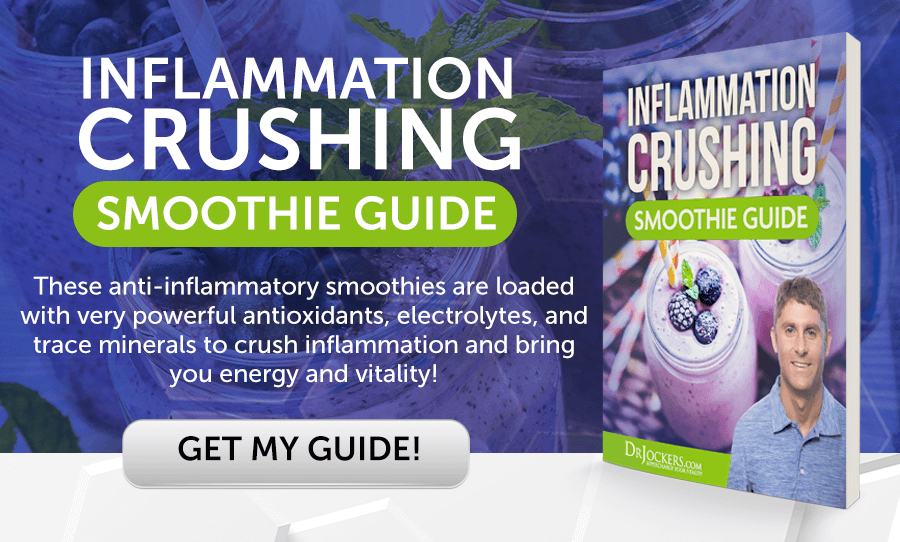


Hi Dr Jockers thank you so much for your very informative health articles! As I live in sunny South Africa and have access to lots of sun, would the 20 to 30 minutes of sunshine every day be sufficient vitamin D3 for a woman in her 60’s? Vitamin D3/K2 is prohibitively expensive here and also not really available. Could I then supplement with just K2?
It may be enough depending upon your skin color and how much skin is exposed, but always best to test and then supplement if needed with a D3/K2.